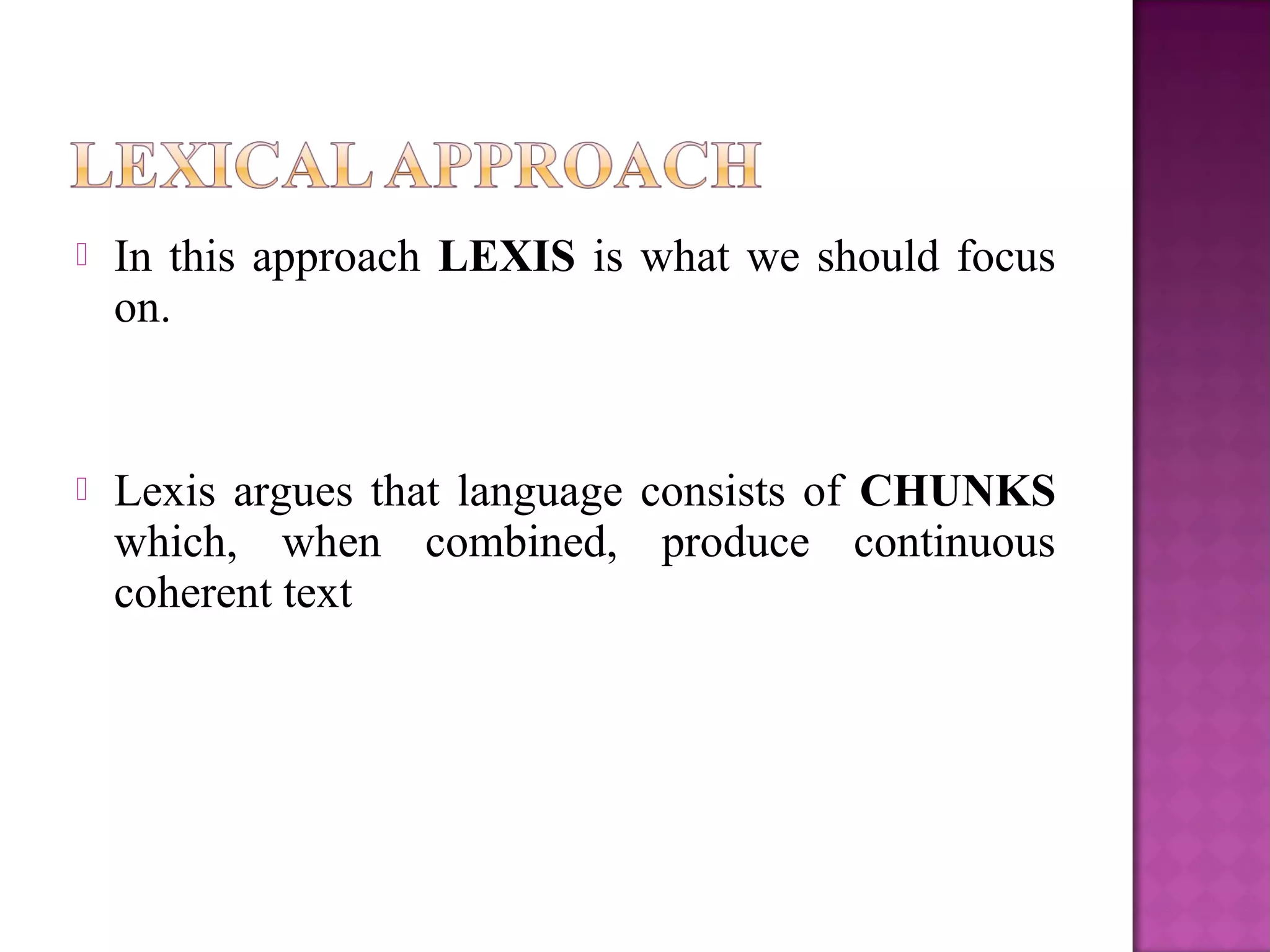This document discusses the lexical approach to language teaching. It focuses on teaching language through vocabulary ("lexis") rather than grammar. It argues that language consists of chunks of words that combine to form coherent texts. These chunks include individual words, collocations of words, fixed expressions, and semi-fixed expressions. The goal is to help students learn and use these lexical chunks to improve their language proficiency.



